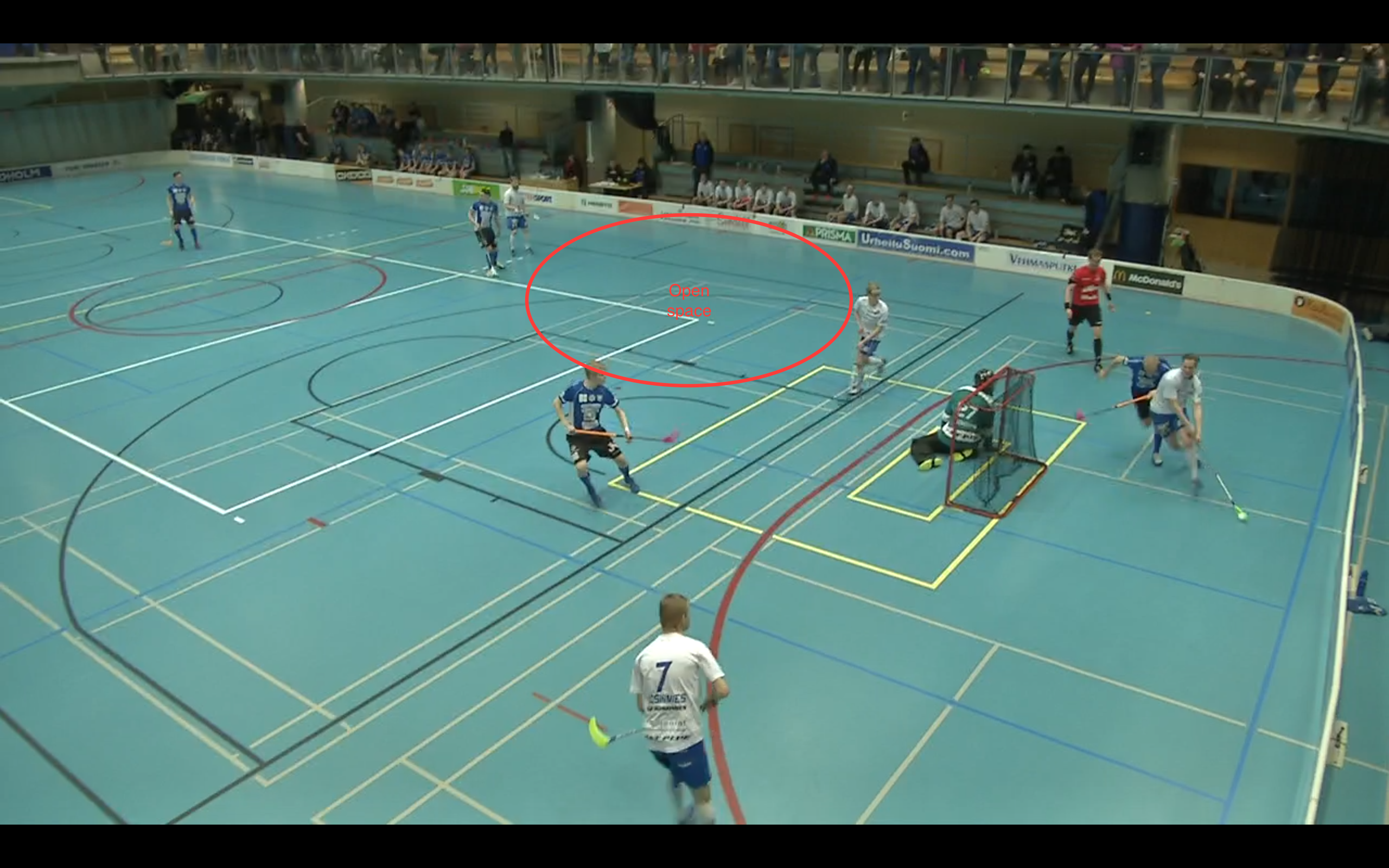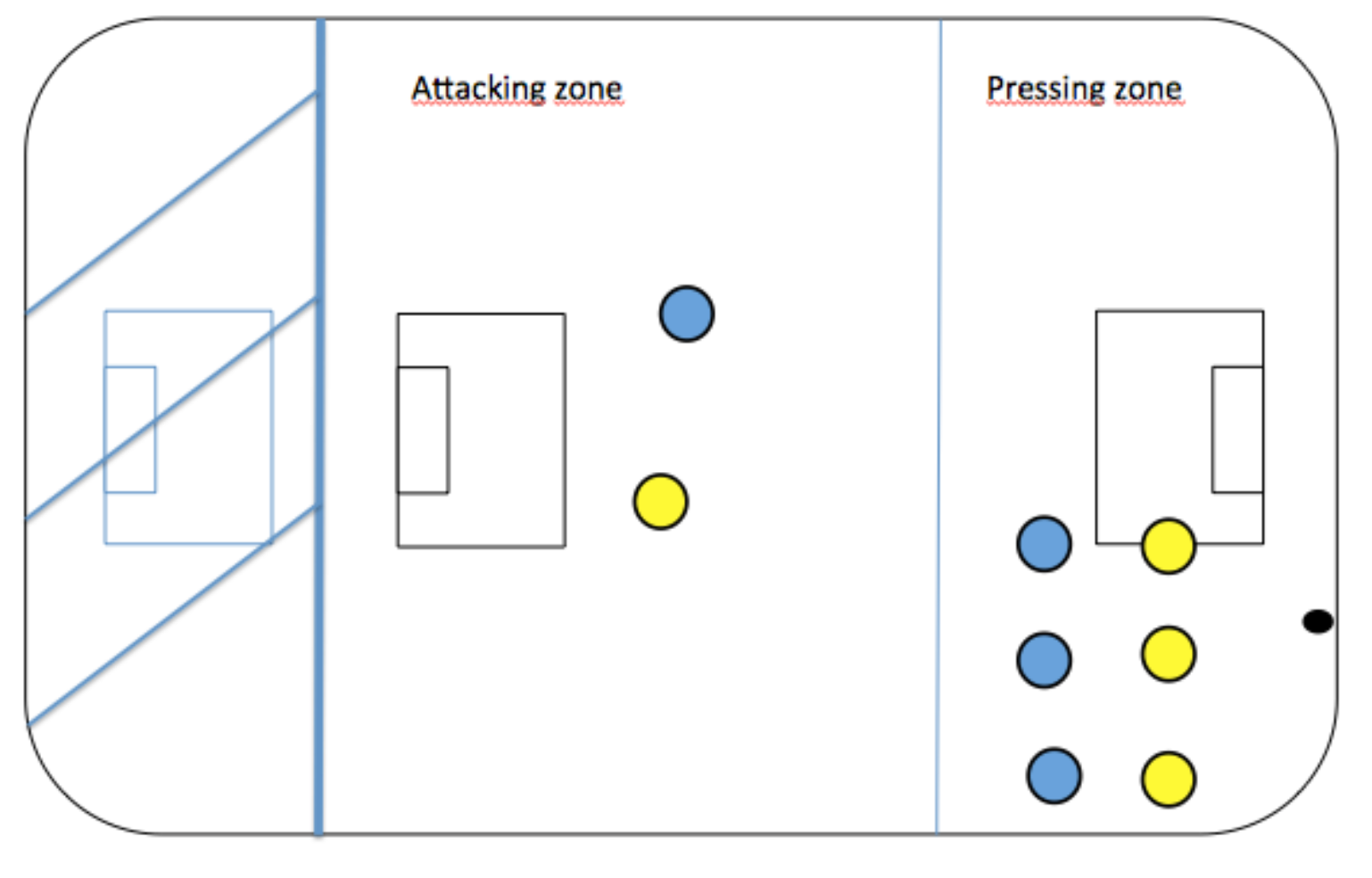Again, not a long blog post. There has been some debate in social media about identifying a problem in a team’s game and the possible solutions for that problem. The last debate took wind from Mikael De Anna’s blog post about the complexity of floorball in which he questioned the linear analysis of Finnish Women’s national team’s head coach Lasse Kurronen (Kurronen tweeted that Finland's U19 Women's team had no chance against Sweden in World Championships final as they lost the 1v1 -situations). Another debate rose from an article written by Jussi Leppälahti in Finnish sports magazine “Elmo”, in which he stated that in modern team sports coaching it is important to acknowledge the utmost importance of optimising the time available and to do that, one should integrate the tactical, technical and physical work in game-based sessions. To no one's surprise, the statement was questioned because it was seen to understate the importance of physical training.
If we respect the complex nature of an invasion sport like floorball, we can’t simply state “Because A happens, we should do B so that A doesn’t happen”. As many things affect the outcomes of even a single moment in a game, we should work backwards from the game itself and identify the problem while respecting the complexity in any given situation.
An example
This is an offensive moment, “Build up under high pressure with three players”. First we should analyse if the players involved are respecting the team’s main principles.

Picture 1: NST Lappeenranta's main principles in build up moment under pressure
We can say that yes, the players are executing the main principles regarding their positioning at an acceptable level.
However as the game proceeds, we lose the ball. Now we must analyse why does that happen. The “simple” answer is that there is an individual mistake but in complex invasion sports, that is almost always a very lazy – and wrong – answer. The positioning is ok, the player who starts with the ball (Ere Laitimo) is doing lateral movement with the ball as is expected; we have central support (Samuli Huppunen) and also passing option in the weak side (Konsta Koskimies). There isn’t any bad (or too weak) pass, the positioning is ok but still we lose the possession (for a moment).
Now the linear answer could be that the player offering a support in central lane (Huppunen) lacks technical ability when receiving the ball and thus isn’t able to control it under pressure – he needs a lot of closed technical work with special focus on receiving. The physical “A->B” -answer could be that Huppunen lacks linear speed and needs to do a lot of strength training to improve his first steps.
But again, as floorball is an invasion sport, the key to understand the problem can be found from the interaction of the three players. If Laitimo would have made the pass half a second earlier, then Koskimies would have had a bit more space to make the following pass to Huppunen who then would have probably received the pass in front of him instead – now he has a good body position but as he receives the pass behind his body, he can’t observe the surroundings and open space very well.
If there is something Huppunen could have done, it’s that he could have observed the field better before the eventual pass and when the pass didn’t come in front of him, he could have let it slide to his other side and move forward.

Picture 2: If Huppunen (white player in the middle) would have observed the space behind him better, he would have had more options. Question, players mistake or the coaches who hadn't succeeded in teaching this?
How to solve the problem?
The linear answer would neglect the interaction between the three players. That is also why the answer would be if not totally wrong, not the best available. If there is a problem in a game, it should be dealt with game-based approach in a training session.
The best way to deal with the problem is to create a similar kind of situation in a training session and get repetitions without repetition.
3+1v3+1 build up under pressure

Set up:
3+1v3+1. 3v3 in “pressing zone”, 1v1 in the attacking zone. The coach throws the ball to play and the three players closest to the ball (yellow in the picture) try open up the play under pressure by using the team’s principles (mentioned before). To make the build up more difficult, the ball must dribbled outside the pressing zone. If the three players succeed in this and the ball is dribbled outside the pressing zone, the other players are not allowed to follow and there will be a short 2v1 -situation in the attacking zone (1-2 seconds). If there’s no goal, the coach shouts “Play!” and the game proceeds 4v4 without restrictions for a while.
Progressions:
- allow a long pass to the attacking zone
- Make the field bigger and add another pressing player
In possession (offensive organisation): always one player in the central lane, positive / side body position; immediate floorball actions with the ball
Out of possession (defensive organisation): prevent the player with the ball from moving or passing forward; cover the central lane
Positive transition: Securing the first pass
Negative transition: prevent the player with the ball from moving past you
Feedback: individual, special focus on the player supporting on the central lane (observe the surroundings, side / positive body position)
”…we should try to improve a physical quality (or a technical, tactical, or phychological one, for that matter) only if it’s a limiting factor in a game performance. The quality should also be enhanced in a realistic context that’s applicable to competition.” – Dr. Fergus Connolly (from Game Changer – The Art of Sports Science)
As we put emphasis on the game-like situations in the training session, we might notice that a player is having difficulties during the exercise. We must analyse the situation and communicate with the player what could be the problem. Usually good discussion and more practice time will solve the problem but sometimes we might identify a specific limiting factor. Then we could plan an individual specific training program (technical, tactical, physical, psychological) in which we try to concentrate on the problem at hand. The individual program shouldn’t in most cases interfere with the team’s training program. We must monitor the player’s development closely and analyse by watching the game if the player develops in the identified moment. If not, we must re-think the individual program and adjust it accordingly, then repeat.
So, there is time and place for individual work also in team sports but it should always respect the game itself.
Perttu Kytöhonka (@pkytohonka)
Sidenote
A short sidenote from the video clip. If the players weren’t trained to solve the high press of the opponent with clear principles, the moment could have easily ended up in a situation where Koskimies would have received the pass from Laitimo even later and the opponent would have been able to press him. Then Koskimies would have been forced to turn his back to the field. Then the situation would have been more unfavourable for the white team. There could have been a “1v1” situation and if lost, the coach could have made the linear conclusion, that the team needs more physical work as they lose 1v1-situations.
The game happens between the players.
